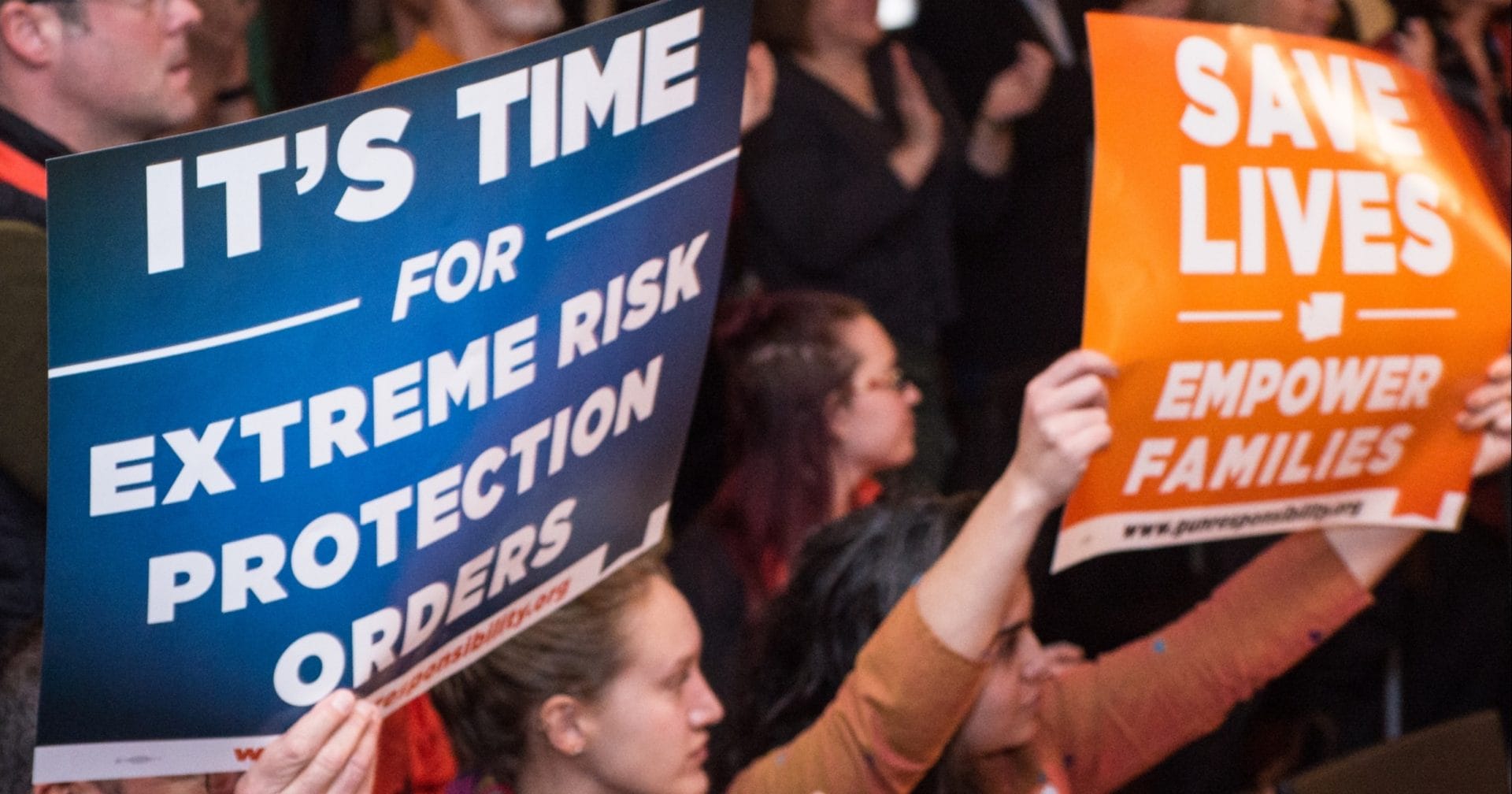
Extreme Risk Laws Are Saving Lives
How can we prevent tragedies before they occur?
In the wake of a tragedy, we always ask what could have been done to prevent it. Nearly 40,000 Americans died from gun violence in 2017, and this epidemic leaves no community untouched. While the toll is staggering, there are proven solutions we can enact to address the problem. One solution gaining traction in more states is a law designed to address warning signs and prevent gun violence.
It’s called an extreme risk protection order.
From suicide to school shootings to domestic violence, people who use firearms to harm themselves or others often show clear warning signs before doing so.
Here are two common examples of how an extreme risk protection order (ERPO)* could save a life. Imagine being a family member who knows a loved one is thinking about suicide. You know she has access to a firearm. Shouldn’t you have a way to intervene and get her the help she needs? Or if a police officer has received reports that a student is discussing harming his classmates, shouldn’t the officer have a way to remove the student’s access to guns while investigating the situation?
An ERPO law provides the legal authority to do just that.
Depending on the state, a family member, intimate partner, law enforcement officer or sometimes another knowledgeable person, such as a health professional, can petition a judge to temporarily remove firearms from someone exhibiting warning signs that indicate they may use a gun to hurt themselves or others.
The good news is that eight states passed this kind of law in 2018, bringing the total to 13. The even better news is that these laws have already been proven to save lives.
Maryland is proving just how effective extreme risk protection orders can be.
Spurred to act by the school shooting in Parkland, Florida, the Maryland General Assembly passed an extreme risk law that was signed by the state’s Republican governor and went into effect on October 1, 2018. Over the next three months, Marylanders submitted 302 requests to the courts.
In 148 cases, a judge ordered law enforcement to remove firearms from the individuals in question. Four of those included specific and credible threats to schools, according to Montgomery County Sheriff Darren Popkin. “Orders are not only being issued appropriately, but are also saving lives,” he said.
The new system is showing how, through due process, someone who sees warning signs that an individual may be a danger to themself or to others if they have access to firearms has a way to act quickly and save lives.
A number of other states are expected to consider ERPO laws this year. Those states should look to Maryland’s early success as a model.
We’re fighting to pass ERPO laws in states across the country.
Helping others states pass extreme risk laws is one of our top legislative priorities this year at the state level. We’re working with lawmakers, community leaders, and partner organizations to ensure this lifesaving tool is available to more Americans.
Democrats and Republicans, gun owners and non-gun owners alike can agree that looking into gun violence warning signs is a reasonable way to save lives. Maryland’s early success—and its bipartisan support—should be a model for other states.
If you want to get involved, tell your state and local lawmakers that you want an extreme risk law in your state. You can point them to our Extreme Risk Law Toolkit for resources and guidelines on how best to enact and implement them.
If you or a loved one is contemplating suicide, call the free and confidential National Suicide Prevention Lifeline at 1-800-273-8255.
If you or someone you know is afraid a family or household member may be abusive or dangerous, call local law enforcement or the free and confidential National Domestic Violence Hotline at 1-800-799-7233.
*A note on terminology: Extreme risk laws are called different things by different people. In California, this law is known as a “Gun Violence Restraining Order” (GVRO) and in Delaware, it is known as a “Lethal Violence Protection Order.” The media often refers to these laws as “Red Flag” laws, although some mental health advocates oppose the use of this terminology because they believe it is stigmatizing to people experiencing a crisis.